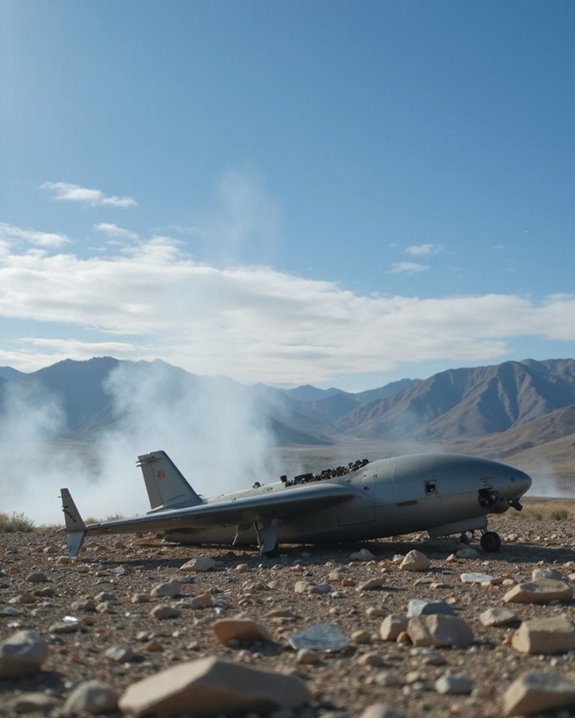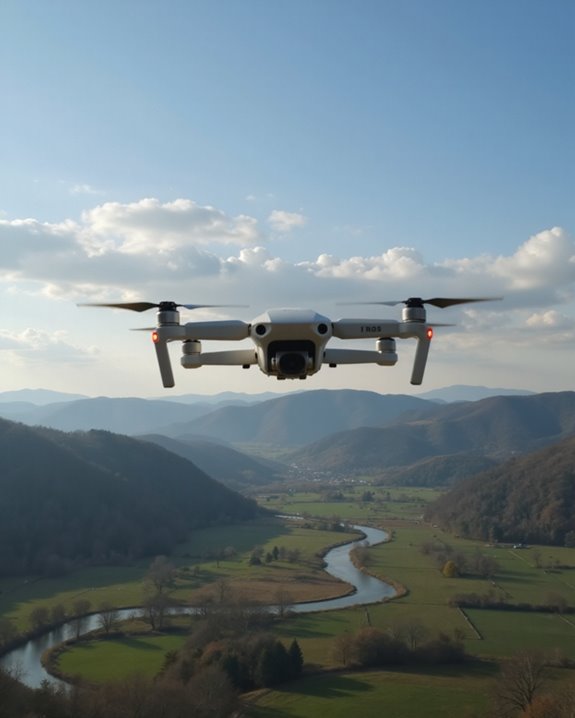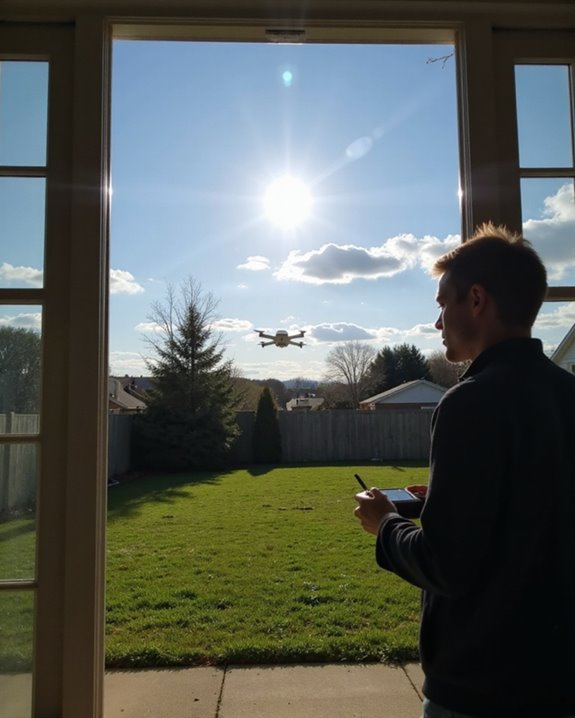Yes, a drone definitely hit the headlines today! On the India-Pakistan border, over 50 Pakistani drones were shot down by India’s military, while Pakistan claimed to down about 25 Indian drones—talk about high-tech tag! In Ukraine, clever drones even took out two Russian Su-30 fighter jets using precision hits. These incidents show how advanced counter-drone tech and drone swarms are shaking up airspace security everywhere. There’s a lot more behind these dramatic takedowns—stick around to find out!
Key Takeaways
- Over 50 Pakistani drones were shot down by the Indian Army on May 8-9, 2025, along the India-Pakistan border.
- Pakistan claimed to have downed 25 Indian drones on the same dates during escalating border tensions.
- Ukrainian drones recently downed two Russian Su-30 fighter jets using drone boats near Crimea and Novorossiysk.
- Russian airports suspended operations due to drone threats, indicating ongoing aerial drone activity and countermeasures.
- Advancements in counter-drone technologies enable rapid detection and neutralization of hostile drones in active conflict zones.
Recent Drone Interceptions Along the India-Pakistan Border
If you thought border security was just about fences and guards, think again—drones are now taking center stage along the India-Pakistan border! On the night of May 8-9, 2025, the skies above Jammu and Kashmir looked more like a high-tech video game than a quiet border zone. With Pakistan tensions running high, border skirmishes erupted as over 50 Pakistani drones reportedly met their match against India’s air defense systems. The Indian Army claimed quick, decisive action, shooting down drones and even targeting Pakistan’s air defense in response to earlier violence. Meanwhile, Pakistan insisted it downed Indian drones too—talk about a two-way street! These drone interceptions add a whole new layer to the old rivalry, showing technology is now a key part of border security. It is crucial for military and security forces to utilize FAA-approved drone detection technologies to effectively counter such aerial threats.
Ukrainian Drones and the Downing of Russian Fighter Jets
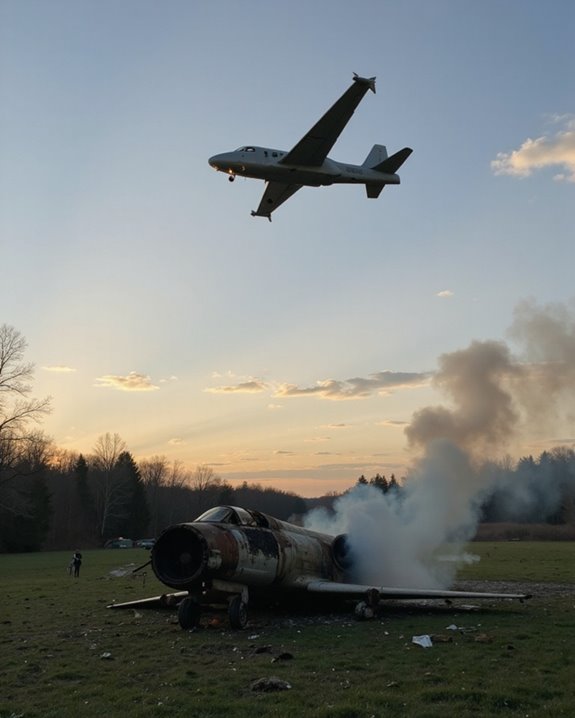
History was made in the skies when Ukrainian drones pulled off a move straight out of a sci-fi blockbuster—downing not one, but two Russian Su-30 fighter jets! Imagine unmanned Magura V7 drone boats, not just skimming the sea but launching real AIM-9 and Sidewinder missiles. The Missile Firing was so precise, even the jets’ advanced systems couldn’t dodge the attack near Novorossiysk and Crimea. Crew Ejections were dramatic—two Russian pilots ejected and were rescued, but sadly, the fate of another pair was not so lucky. Each Su-30 costs about $50 million, so losing two is a serious blow for Russia. This operation, led by Ukraine’s GUR special unit, signals a bold leap in drone warfare, changing battle strategies forever! Such advancements reflect the growing importance of military-grade tactical drones in modern combat scenarios.
Disruptions in Russian Airspace Ahead of Victory Day

Chaos swept through Russian skies as Ukrainian drones made their presence felt right before the much-anticipated Victory Day celebrations! Imagine preparing for a national holiday, only to have your travel plans thrown into disarray—over 60,000 passengers certainly didn’t find it amusing. With airports in at least ten cities suspending operations, the impact on civilians was undeniable. More than 100 Aeroflot flights were canceled, and over 140 delayed, turning Moscow’s usually bustling terminals into scenes of confusion. Economic fallout was swift: airlines lost revenue, tourism took a hit, and even foreign dignitaries like Serbian President Aleksandar Vučić were forced to reroute or make emergency landings. The disruptions sparked a “transport collapse” in Moscow, highlighting just how vulnerable major events are to modern drone warfare. In response to such threats, advanced technologies like signal blocking technologies are being developed to provide comprehensive protection against unauthorized drone activity.
Technologies Behind Modern Counter-Drone Operations
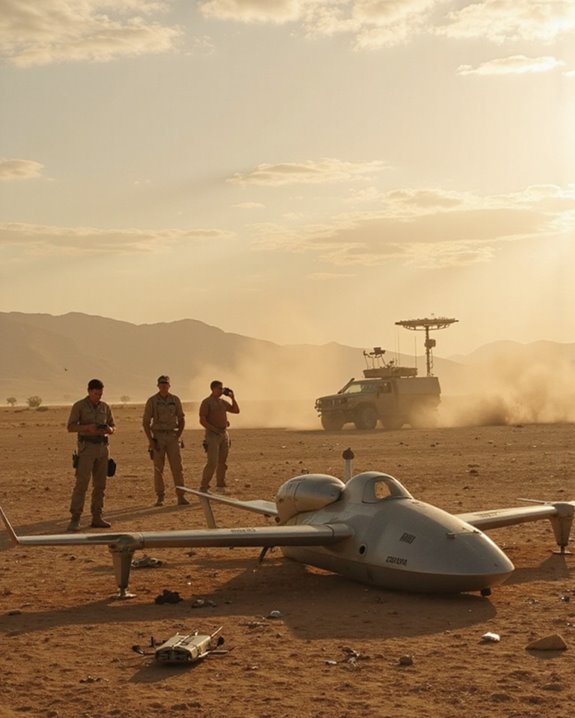
Spotting a drone in the sky used to feel like something out of a sci-fi movie, but these days, it’s a routine part of modern defense! Today’s counter-drone operations rely on a toolkit that’s both high-tech and a bit mind-boggling. Radar Integration is key—imagine four radar sensors at each corner of a tactical vehicle, spinning like a super-powered weather vane, providing 360-degree surveillance. These radars team up with AI to spot drones faster and smarter, while electro-optical systems give defenders real-time visuals. For zapping threats, Microwave Jamming is the rising star, frying drone circuits without leaving a mark! Vehicles like the Plasan StormRider even come armored and equipped for autonomous operation. It’s not just defense, it’s a high-speed tech race!
The Tactical Challenge of Drone Swarms
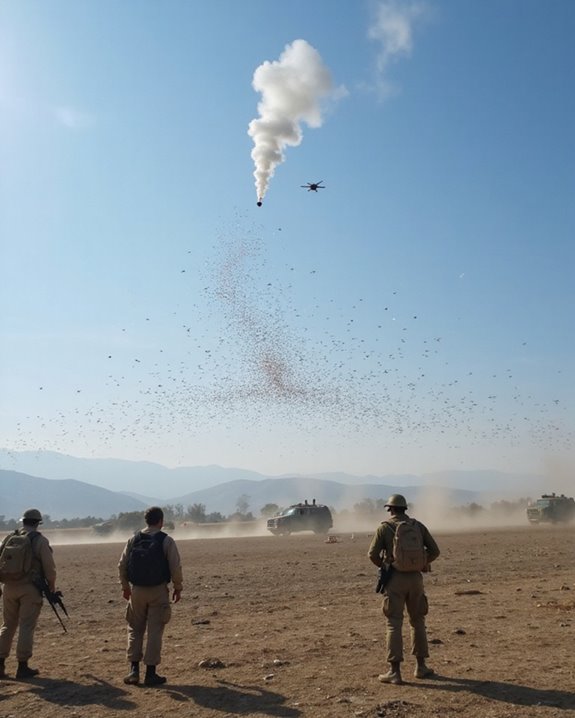
Whiz-bang technology is impressive on its own, but what happens when dozens—or even hundreds—of drones work together like a buzzing robot flock? That’s where Swarm Dynamics come into play, and it’s honestly a game-changer. Instead of just one expensive missile, imagine the Pentagon’s Replicator program deploying thousands of cheap, expendable drones, or MIT’s Perdix system sending up swarms from F/A-18 jets—talk about strength in numbers! These swarms use clever Evasion Tactics, zipping through defenses, dodging radar, and sometimes confusing even the best counter-drone tech. Traditional defenses, designed for single targets, can quickly get overwhelmed—kind of like playing Whac-A-Mole with a hundred moles and only one mallet. The tactical challenge? Keeping up when the drones never stop coming!
Evolving Uses of Drones in Contemporary Warfare
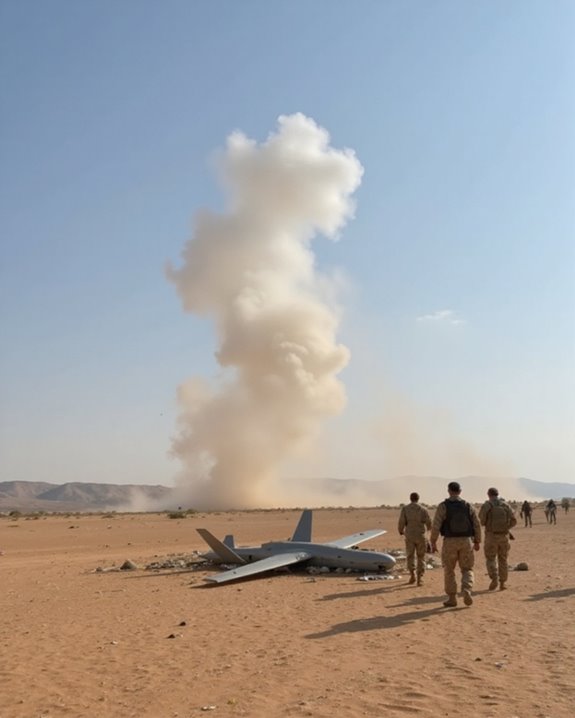
How have drones gone from sci-fi gadgets to real battlefield game-changers almost overnight? Today’s military drones are no longer just flying cameras—they’re adaptable, tough tools. Thanks to modular payloads, troops can swap out sensors, cameras, or even weapons, almost like changing the apps on your phone. This flexibility means one drone can tackle scouting, jamming, or striking, depending on the mission! Hybrid designs are also making waves, blending the long-range cruising of fixed-wing aircraft with the nimble hovering of helicopters—think of a Swiss Army knife with wings. These innovations help soldiers on the ground, giving them eyes in the sky and fast action without heavy equipment. Modern conflicts, like in Ukraine, prove drones’ impact—sometimes beating tanks at their own game!
Strategic and Geopolitical Implications of Drone Engagements

Ever wonder what happens when drones aren’t just spying but actually getting shot down left and right? The skies over India and Pakistan are packed with action—over 50 Pakistani drones were shot down by Indian air defenses in a single night, and Pakistan claims it downed 25 Indian drones in return. These numbers aren’t just statistics; they spark policy debates and push countries to rethink their Alliance Strategies. Each drone shootdown becomes a message—India’s use of Israeli-made Harop drones, for example, catches global attention and shapes how alliances are viewed. Both sides highlight their military wins (and losses) to influence regional power plays. When drones fall, tensions rise, and everyone from generals to politicians starts recalculating their next move!
Future Trends in Drone Defense and Warfare
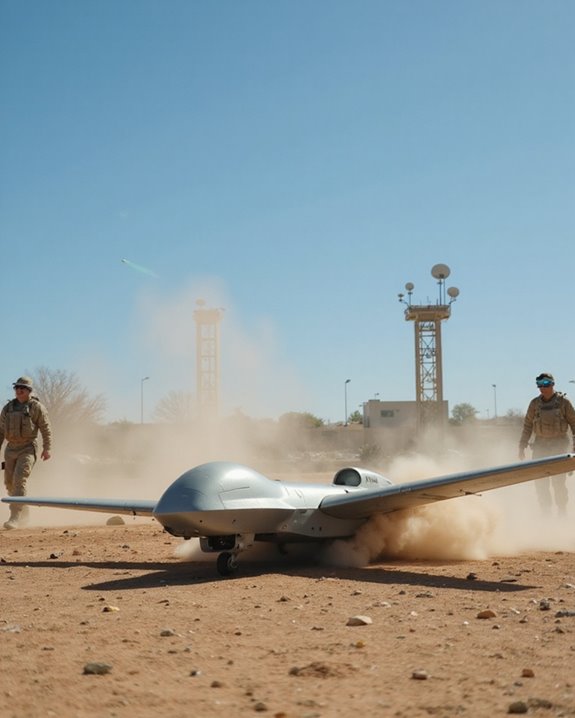
With drones dropping from the sky faster than you can say “incoming,” it’s no wonder everyone’s asking what comes next in this high-tech game of cat and mouse. The future of drone defense is getting smarter, safer, and—believe it or not—more ethical. AI Ethics are front and center as the Pentagon pursues low-collateral systems and directed energy technologies like lasers that zap drones without turning city blocks into Swiss cheese. Passive RF radars and open architecture gear mean defenses can adapt quickly, while the Replicator project promises stealthier countermeasures. As drone swarms and adversarial tech get scarier, networked command and control and better training are a must. Space Defenses are even entering the conversation, ensuring threats above Earth don’t go unchecked!
Frequently Asked Questions
Who Manufactures the Drones Used in These Military Operations?
Drone suppliers for military operations include General Atomics, Lockheed Martin, Northrop Grumman, Baykar, and DJI. Their production methods involve advanced engineering, modular design, and integration of autonomous systems, ensuring drones meet diverse operational, surveillance, and combat requirements globally.
What Legal Frameworks Govern Drone Usage in International Conflicts?
Legal frameworks governing drone usage in international conflicts include International Humanitarian Law and relevant international treaties. These frameworks emphasize distinction, proportionality, state responsibility, and accountability, while also addressing emerging challenges posed by autonomous technologies and the need for transparency.
How Are Civilians Warned About Potential Drone Threats Near Borders?
Like a ripple before a storm, alert methods and warning strategies for civilians near borders include emergency alerts, educational campaigns, and collaboration with authorities, aiming to promptly inform the public of potential drone threats and enhance community preparedness.
What Training Do Operators of Military Drones Receive?
Training for military drone operators includes a four-year degree, Air Force Officer Training, operator certification, and extensive simulation exercises. Instruction covers air navigation, surveillance, mission tactics, sensor operations, airframe-specific systems, ongoing technology updates, and interdisciplinary teamwork.
Are There Environmental Impacts From Drone Debris After Interceptions?
While some may argue debris is negligible, drone interceptions can cause debris pollution, leading to significant habitat impact. Fragments may introduce toxins or disrupt wildlife, emphasizing the need for effective debris management to mitigate environmental consequences in sensitive ecosystems.

